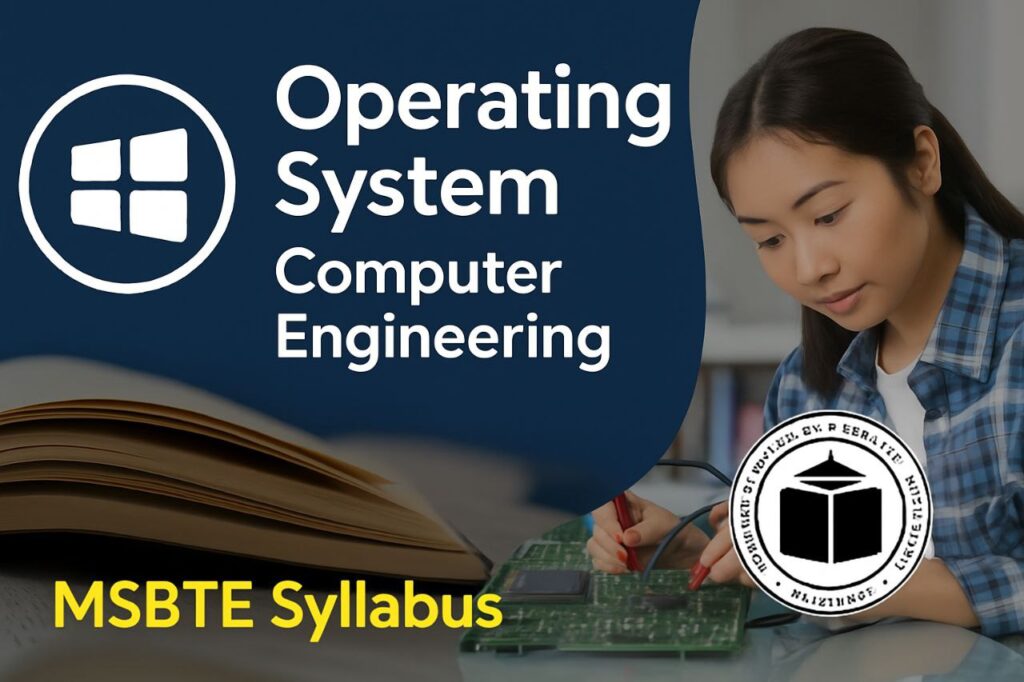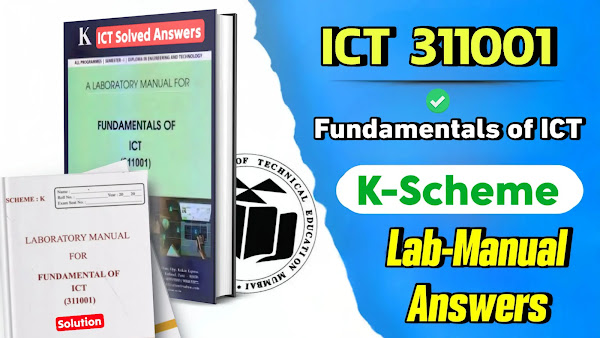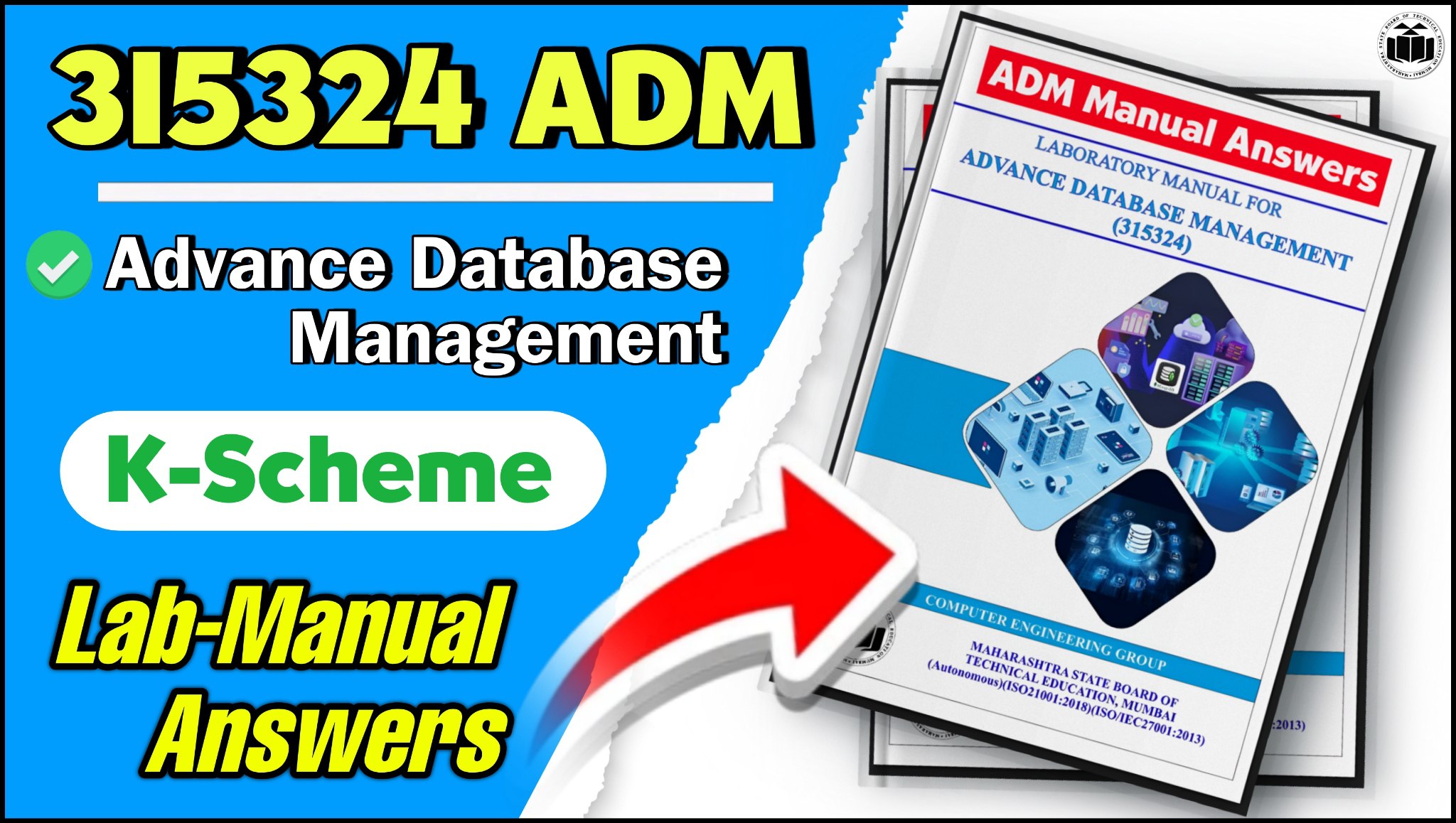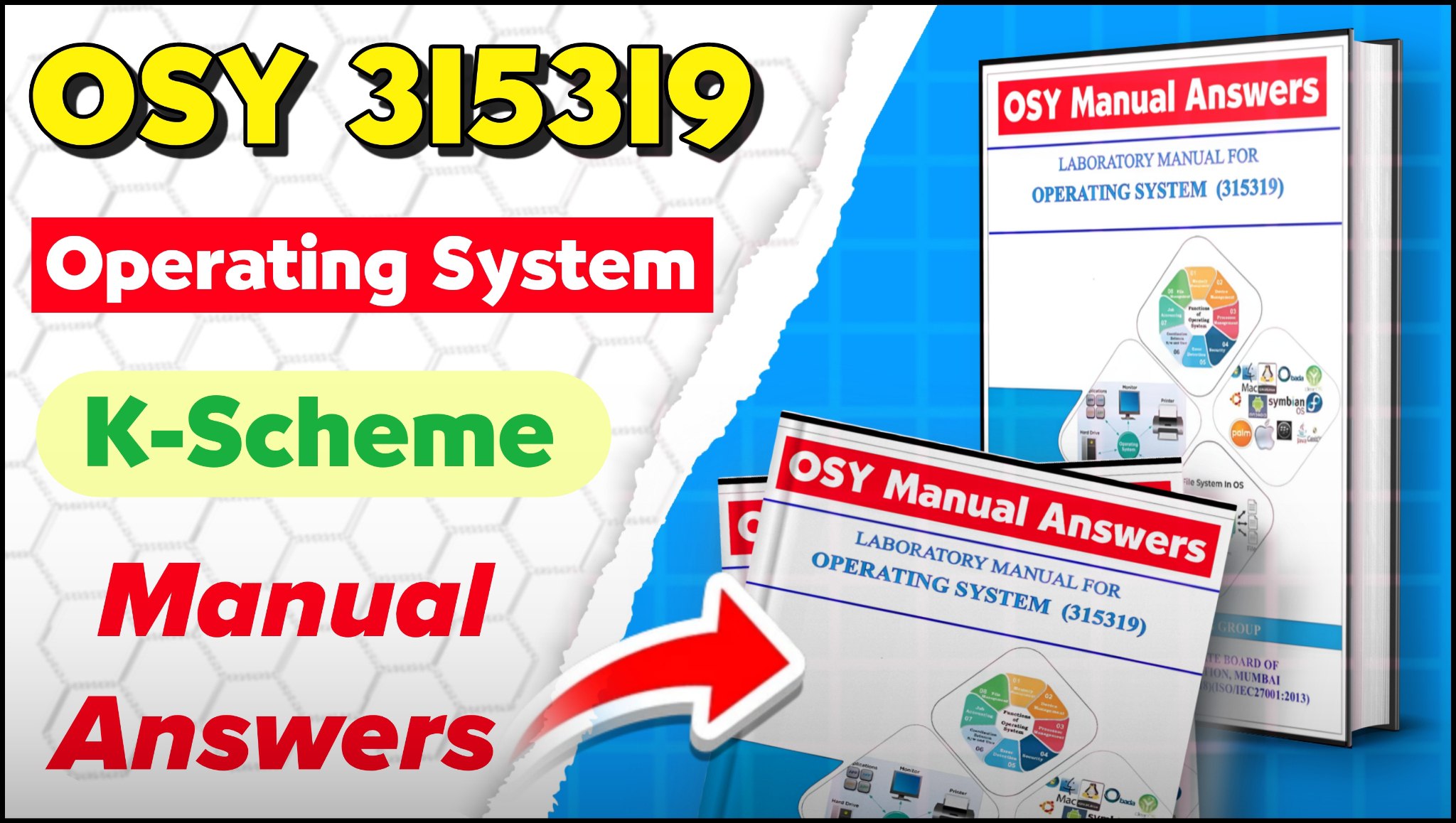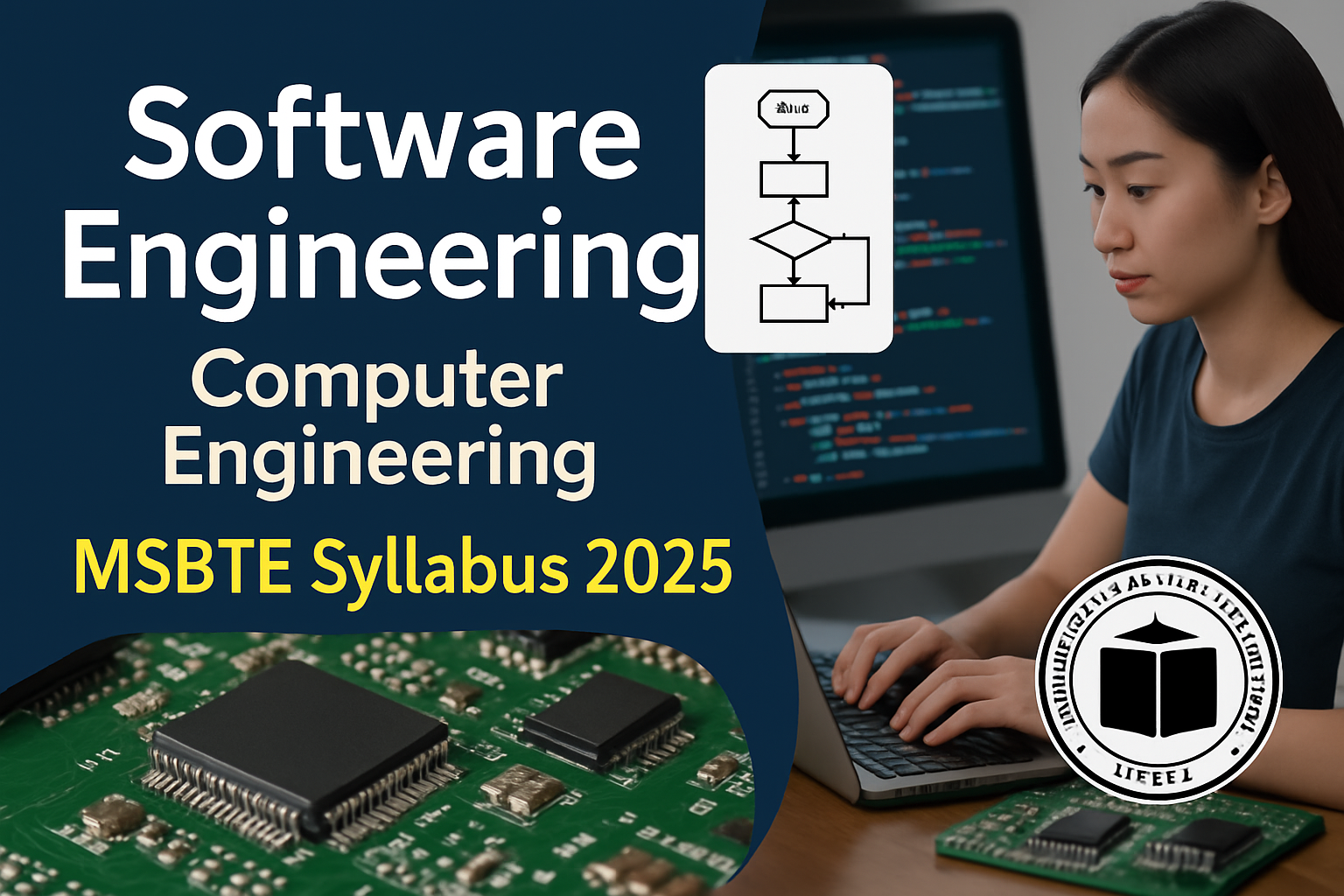Operating System Syllabus – MSBTE Diploma (Course Code: 315319)
Programme Code: AI/ AN/ BD/ CM/ CO/ CW/ DS/ HA/ IF/ IH/ SE
Semester: Fifth | Credits: 9 | Total Marks: 175
I. Rationale
An Operating System is to manage a Computer Hardware and software resources efficiently and provide user friendly environment. An Operating System is a System Program that controls the execution of application program and acts as an interface between applications and the computer hardware. It also place a curtail role in maintaining system security, protecting data and ensuring that processes do not interfere with one another. This course enables to learn internal functioning of Operating System and will help in identifying appropriate Operating System for given Application/Task.
II. Industry / Employer Expected Outcome
Interpret features of Operating System.
III. Course Outcomes
| Code | Learning Outcome |
|---|---|
| CO1 | Explain the services and components of an Operating System. |
| CO2 | Describe the different aspects of Process Management in an Operating System. |
| CO3 | Implement various CPU Scheduling algorithms and evaluate their effectiveness. |
| CO4 | Analyze the Memory Management techniques used by an Operating System. |
| CO5 | Apply techniques for effective File Management in an Operating System. |
IV. Detailed Syllabus
Unit I: Operating System Services and Components
Topics:
- Operating System: concept, functions
- Different types of Operating System: Batch Operating System, Multi-programmed, Time Shared Operating System, Multiprocessor System, Distributed System, Real Time System, Mobile OS (Android OS)
- Command line based Operating System: DOS, UNIX GUI based Operating System: WINDOWS, LINUX, MaC OS
- Different Services of Operating System, System Calls: Concept, types of system calls
- Operating System Components: Process Management, Main Memory Management, File Management, IO Management, Secondary Storage Management
Learning Outcomes:
- TLO 1.1 Describe functions of an Operating System.
- TLO 1.2 Explain different services of Operating System.
- TLO 1.3 Explain use of system call of Operating System.
- TLO 1.4 Explain activities of Operating System in concern with their components.
Suggested Pedagogies: Presentations, Lecture Using Chalk-Board
Unit II: Process Management
Topics:
- Processes: process state, process control block
- Process Scheduling: scheduling queues, types of schedulers, context switch
- Inter Process Communication: Shared memory system, Message passing system
- Threads: Benefits, User and Kernel level threads, Multithreading Models: One to One, Many to One, Many to Many
- Execute process commands like: top, ps, kill, wait, sleep, exit, nice
Learning Outcomes:
- TLO 2.1 Explain the different states of a process.
- TLO 2.2 Describe the functions of different component of process stack in PCB (Process Control Block).
- TLO 2.3 Explain multiple processes access shared resources without interfering each other.
- TLO 2.4 Compare Multithreading models.
Suggested Pedagogies: Lecture Using Chalk-Board, Presentations
Unit III: CPU Scheduling
Topics:
- Scheduling: Basic concept, CPU and I/O burst cycle
- Preemptive and Non-preemptive scheduling, scheduling criteria
- Types of Scheduling algorithms: First Come First Serve(FCFS), Shortest Job First (SJF), Shortest Remaining Time Next (SRTN), Round Robin (RR), Priority Scheduling, Multilevel Queue Scheduling
- Deadlock: System Models, Necessary conditions Leading to Deadlock, Deadlock Handling: Deadlock prevention, Deadlock avoidance- Banker’s Algorithm
Learning Outcomes:
- TLO 3.1 Justify the need of given scheduling criteria with relevant example.
- TLO 3.2 Explain with example the procedure of allocating CPU to the given process.
- TLO 3.3 Calculate turnaround time and average waiting time of the given scheduling algorithm.
- TLO 3.4 Explain functioning of the given necessary conditions leading to Deadlock.
Suggested Pedagogies: Presentations, Lecture Using Chalk-Board
Unit IV: Memory Management
Topics:
- Basic Memory Management: Partitioning – Fixed and Variable, Free Space Management Techniques: Bit map, Linked List
- Swapping, Compaction, Fragmentation, Partitioning Algorithms: First fit, Best fit, Worst fit
- Non-contiguous Memory Management Techniques: Paging, Segmentation
- Virtual Memory: Basics, Demand paging, Page Fault
- Page Replacement Algorithm: First In First Out (FIFO), Least Recently Used (LRU), Optimal
Learning Outcomes:
- TLO 4.1 Compare fixed and variable memory partitioning.
- TLO 4.2 Differentiate between Bit map and Linked list technique.
- TLO 4.3 Explain working of various partitioning algorithm.
- TLO 4.4 Calculate page fault for given page reference string.
Suggested Pedagogies: Lecture Using Chalk-Board, Presentations, Video Demonstrations
Unit V: File Management
Topics:
- File Concepts: Attributes, Operations, File types and File system structure
- Accessing Methods: Sequential, Direct
- File Allocation Methods: Contiguous allocation, Linked allocation, Indexed allocation
- Directory Structure: Single level, Two level, Tree structured Directory
Learning Outcomes:
- TLO 5.1 Explain structure of the given file system with example.
- TLO 5.2 Describe mechanism of file access method.
- TLO 5.3 Explain procedure to create access directories and assign the given file access permissions.
Suggested Pedagogies: Presentations, Lecture Using Chalk-Board
V. Teaching-Learning & Assessment Scheme
| Course Code | Course Title | Abbr | Course Category/s | Learning Scheme | Credits | Assessment Scheme | |||||||||||||
|---|---|---|---|---|---|---|---|---|---|---|---|---|---|---|---|---|---|---|---|
| Actual Contact Hrs./Week | SLH | NLH | Paper Duration | Theory | Based on LL & TL | Based on SL | Total Marks | ||||||||||||
| CL | TL | LL | Practical | FA-TH | SA-TH | Total | FA-PR | SA-PR | SLA | ||||||||||
| 315319 | OPERATING SYSTEM | OSY | DSC | 5 | – | 2 | 2 | 9 | 3 | 30 | 70 | 100 | 25 | 10 | 25 | 10 | 25 | 10 | 175 |
Total IKS Hrs for Sem. : 0 Hrs
Abbreviations: CL- ClassRoom Learning, TL- Tutorial Learning, LL- Laboratory Learning, SLH- Self Learning Hours, NLH- Notional Learning Hours, FA – Formative Assessment, SA – Summative assessment, IKS – Indian Knowledge System, SLA – Self Learning Assessment
Legends: @ Internal Assessment, # External Assessment, *# On Line Examination, @$ Internal Online Examination
Note:
- FA-TH represents average of two class tests of 30 marks each conducted during the semester.
- If candidate is not securing minimum passing marks in FA-PR of any course then the candidate shall be declared as “Detained” in that semester.
- If candidate is not securing minimum passing marks in SLA of any course then the candidate shall be declared as fail and will have to repeat and resubmit SLA work.
- Notional Learning hours for the semester are (CL+LL+TL+SL)hrs.* 10 Weeks
- 1 credit is equivalent to 30 Notional hrs.
- * Self learning hours shall not be reflected in the Time Table.
- * Self learning includes micro project / assignment / other activities.
VI. Laboratory Learning Outcomes and Aligned Practical / Tutorial Experiences
| Practical / Tutorial / Laboratory Learning Outcome (LLO) | Sr No | Laboratory Experiment / Practical Titles / Tutorial Titles | Number of hrs. | Relevant COs |
|---|---|---|---|---|
| LLO 1.1 Execute the system call commands. | 1 | * System call commands in Linux such as fork(), exec(), getpid, pipe, exit, open, close, stat, uname. | 2 | CO1 |
| LLO 2.1 Execute process related commands. | 2 | * Process related commands in Linux – top, ps, kill, wait, sleep, nice, renice, bg, fg. | 2 | CO2 |
| LLO 3.1 Execute message passing and shared memory commands. | 3 | * a. Commands for Sending Messages to Logged-in Users – who, cat, wall, write, mesg. * b. List Processes Attached to a Shared Memory Segment: ipcs. | 2 | CO2 |
| LLO 4.1 Implement First Come First Serve (FCFS) Scheduling algorithm. | 4 | * Write a C/Python program to calculate average waiting time and Turnaround Time of n processes with First Come First Serve (FCFS) CPU scheduling algorithm. | 2 | CO3 |
| LLO 5.1 Implement Shortest Job First (SJF) Scheduling algorithm. | 5 | Write a C/Python program to calculate average waiting time and Turnaround Time of n processes with Shortest Job First (SJF) CPU scheduling algorithm. | 2 | CO3 |
| LLO 6.1 Implement Priority Scheduling algorithm. | 6 | Write a C/Python program to calculate average waiting time and Turnaround Time of n processes with Priority CPU scheduling algorithm. | 2 | CO3 |
| LLO 7.1 Implement Round Robin (RR) Scheduling algorithm. | 7 | Write a C/Python program to calculate average waiting time and Turnaround Time of n processes with Round Robin (RR) CPU scheduling algorithm. | 2 | CO3 |
| LLO 8.1 Implement Banker’s algorithm for deadlock avoidance. | 8 | Write a C/Python program to implement Banker’s Algorithm. | 2 | CO3 |
| LLO 9.1 Execute memory management commands. | 9 | Basic memory management commands – df, free, vmstat, /proc/meminfo, htop. | 2 | CO4 |
| LLO 10.1 Implement First In First Out (FIFO) Page Replacement algorithm. | 10 | * Write a C/Python program on First In First Out (FIFO) Page Replacement algorithm. | 2 | CO4 |
| LLO 11.1 Implement Least Recently Used (LRU) Page Replacement algorithm. | 11 | Write a C/Python program on Least Recently Used (LRU) Page Replacement algorithm. | 2 | CO4 |
| LLO 12.1 Implement sequential file allocation method. | 12 | * Write a C/Python program on sequential file allocation method. | 2 | CO5 |
Note:
- Out of above suggestive LLOs –
- ‘*’ Marked Practicals (LLOs) Are mandatory.
- Minimum 80% of above list of lab experiment are to be performed.
- Judicial mix of LLOs are to be performed to achieve desired outcomes.
VII. Suggested Micro Project / Assignment / Activities for Specific Learning / Skills Development (Self Learning)
Assignment
- Find out the total number of page faults using – i) First In First Out ii) Least recently used page replacement ii) Optimal page replacement Page replacement algorithms of memory management, if the page are coming in the order 7 0 1 2 0 3 0 4 2 3 0 3 2 1 2 0 1 7 0 1
- Compare between CLI based Operating System and GUI based Operating System.
- Differentiate between process and thread (any two points). Also discuss the benefits of multithreaded programming.
- Enlist different file allocation methods? Explain contiguous and indexed allocation method in detail.
Micro project
- Create a report depicting features of different types of operating systems- Batch operating system, Multi programmed, Time shared, Multiprocessor systems, Real time systems, Mobile OS with examples.
- Implement and Compare Memory Allocation Strategies – First Fit, Best Fit, Worst Fit
- Create a report on different operating system tools used to perform various functions.
Self learning
- Complete any one course related to the operating system on MOOCS such as NPTEL, Coursera, Infosys Springboard etc.
Note:
- Above is just a suggestive list of microprojects and assignments; faculty must prepare their own bank of microprojects, assignments, and activities in a similar way.
- The faculty must allocate judicial mix of tasks, considering the weaknesses and / strengths of the student in acquiring the desired skills.
- If a microproject is assigned, it is expected to be completed as a group activity.
- SLA marks shall be awarded as per the continuous assessment record.
- For courses with no SLA component the list of suggestive microprojects / assignments/ activities are optional, faculty may encourage students to perform these tasks for enhanced learning experiences.
- If the course does not have associated SLA component, above suggestive listings is applicable to Tutorials and maybe considered for FA-PR evaluations.
VIII. Laboratory Equipment / Instruments / Tools / Software Required
| Sr.No | Equipment Name with Broad Specifications | Relevant LLO Number |
|---|---|---|
| 1 | Computer system with basic configuration. Linux or alike operating system such as Ubuntu, CentOS or any other. | All |
IX. Suggested Weightage to Learning Efforts & Assessment Purpose (Specification Table)
| Sr.No | Unit | Unit Title | Aligned COs | Learning Hours | R-Level | U-Level | A-Level | Total Marks |
|---|---|---|---|---|---|---|---|---|
| 1 | I | Operating System services and components | CO1 | 10 | 2 | 8 | 4 | 14 |
| 2 | II | Process Management | CO2 | 10 | 4 | 4 | 6 | 14 |
| 3 | III | CPU Scheduling | CO3 | 10 | 2 | 6 | 8 | 16 |
| 4 | IV | Memory Management | CO4 | 12 | 2 | 6 | 8 | 16 |
| 5 | V | File Management | CO5 | 8 | 2 | 4 | 4 | 10 |
| Grand Total | 50 | 12 | 28 | 30 | 70 | |||
X. Assessment Methodologies/Tools
Formative assessment (Assessment for Learning)
- Continuous assessment based on process and product related performance indicators. Each practical will be assessed considering 1) 60% weightage is to process 2) 40% weightage to product
Summative Assessment (Assessment of Learning)
- End Semester Examination, Lab Performance, Viva-voce
XI. Suggested COs – POs Matrix Form
| Course Outcomes (COs) | Programme Outcomes (POs) | Programme Specific Outcomes* (PSOs) | ||||||||
|---|---|---|---|---|---|---|---|---|---|---|
| PO-1 Basic and Discipline Specific Knowledge | PO-2 Problem Analysis | PO-3 Design/ Development of Solutions | PO-4 Engineering Tools | PO-5 Engineering Practices for Society, Sustainability and Environment | PO-6 Project Management | PO-7 Life Long Learning | PSO-1 | PSO-2 | PSO-3 | |
| CO1 | 2 | – | – | 2 | – | – | 1 | |||
| CO2 | 1 | – | – | 2 | 1 | – | – | |||
| CO3 | 1 | 1 | 1 | 2 | 1 | – | – | |||
| CO4 | 2 | 2 | 2 | 2 | 1 | – | 2 | |||
| CO5 | 2 | 2 | 2 | 2 | 1 | – | 2 | |||
Legends: – High:03, Medium:02, Low:01, No Mapping: –
*PSOs are to be formulated at institute level
XII. Suggested Learning Materials / Books
- Operating System: A Concept-Based Approach by Dhananjay M. Dhamdhere (McGraw Hill Education 3rd edition, ISBN: 978-1259005589)
- Operating Systems: Internals and Design Principles by William Stallings (Pearson Education 9th Edition, ISBN: 978-9352866717)
- Linux The Complete Reference by Richard Petersen (McGraw Hill, 6th edition, ISBN: 978-0071492478)
- Linux command line and shell scripting by Richard Blum (Wiley India, ISBN: 978-1118983843)
- Operating System Concepts by Abraham Silberschatz and James Peterson (Wiley India, ISBN: 9781119454083)
XIII. Learning Websites & Portals
| Sr.No | Link / Portal | Description |
|---|---|---|
| 1 | https://archive.nptel.ac.in/courses/106/105/106105214/ | Introduction to Operating System |
| 2 | https://www.geeksforgeeks.org/processes-in-linuxunix/ | Process Related commands |
| 3 | https://ubuntu.com/download/desktop | Installation of Ubuntu |
| 4 | https://developers.redhat.com/products/rhel/download | RedHat Linux download |
| 5 | https://www.digitalocean.com/community/tutorials/linux-commands | Basic Linux commands |
| 6 | https://www.geeksforgeeks.org/what-is-an-operating-system/ | Operating System |
Note: Teachers are requested to check the creative common license status/financial implications of the suggested online educational resources before use by the students
